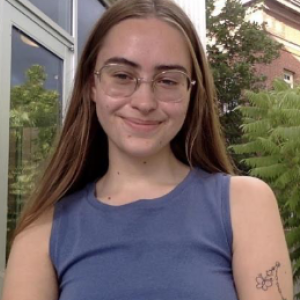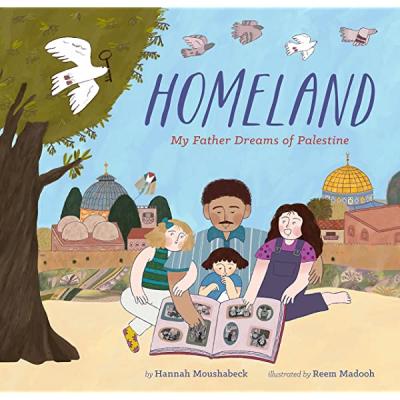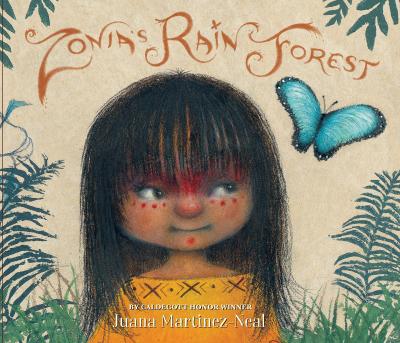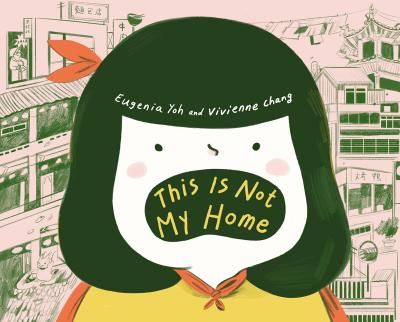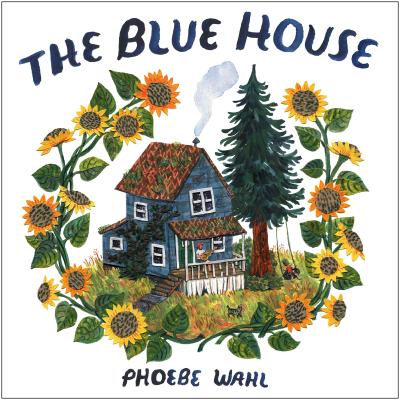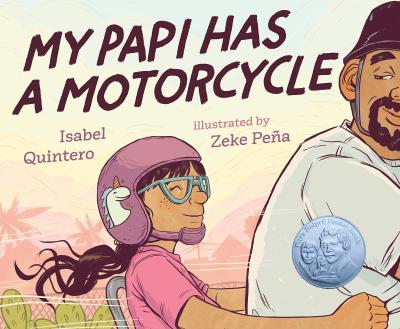
Picturing Home: A Reading Library Exhibition
Our homes shape our identities. The cultures, languages, and relationships we cultivate in our homes are intrinsic to our ideas of self and our connection with the world. As our homes change throughout our lives, we carry pieces of them into our next one and continue to be formed—and reformed—by them.
As powerful a feeling as home can conjure, picture books similarly stir deep emotions. Picture books can connect readers to a feeling of home, however different that may be for each person. Whether it’s a story about a familiar home or one that’s entirely new, picture books help us define the meaning of home and they show us what home means for others.
Hannah Moushabeck’s book Homeland: My Father Dreams of Palestine beautifully echos my own experience of listening wide-eyed to my father’s stories of summers in Puerto Rico. His childhood tales of picking mangos from his family’s backyard trees and listening to the coquis sing their distinct melody at night captivated me just as the children in Moushabeck’s story hang on every word their father shares of his years growing up in Palestine. Outside of my father, tía, and abuela, I had never known stories of Puerto Rico until I was an adult. Once I discovered picture books about the island, I began to see my homeland in a deeply imaginative way. I felt like a kid again as I discovered new things about my distant home—and myself.

Reem Madooh, Illustration for Homeland: My Father Dreams of Palestine, by Hannah Moushabeck (Chronicle Books). © 2023 Reem Madooh.
My Reading Library exhibition, Picturing Home, features 35 picture books that explore different types of homes, connect readers to homes they may not be able to physically access, and consider how to navigate changes to our homes, such as moving, gentrification, and natural disaster. The exhibition is divided into three thematic sections, entitled Places We Call Home, Home as Heritage, and Home Changes.
Places We Call Home
Home can take many forms, and it looks different for everyone. Some people live in houses with their family, some live in apartment buildings with many families, some even live in buses and on boats. Some people stay in the same home for many years while others move more times than they can count. Some people don’t have a home and may struggle to find a place to live. More than just a physical space, home is the people and experiences we have, as well as the memories we keep close throughout our lives.
Home as Heritage
Growing up without knowing your homeland can make you feel far from your identity, heritage, and family, like a piece of yourself is missing. When I read Junot Diaz’s Islandborn, I felt validated in a way I never had before. Lola doesn’t remember her home—she was too young when she moved to remember the island—but she paints a beautiful picture of it through the collective memory of her family. She weaves together stories of music, beaches, monsters, and love to create a personal connection to the island she hasn’t seen in years.

Leo Espinosa, Illustration for Islandborn, by Junot Díaz (Dial Books) © 2018 Leo Espinosa.
Home Changes
The concept of home is deeply personal and informs how we navigate the world. Therefore, changes to our home can be especially destabilizing. For children and adults, moving or adapting to neighborhood development brings a plethora of feelings that can be hard to cope with. The titles in this section include stories of gentrification, like Naomi witnesses in Katie Yamasaki and Ian Lendler’s Everything Naomi Loved. They explore natural disasters that devastate communities and bring them together to rebuild, as the families do in Karina Nicole Gonzalez’s The Coquies Still Sing: A Story of Home, Hope and Rebuilding. And they mine the pain and excitement of moving, as exemplified in Deborah Underwood’s Bad Bye, Good Bye. Each story offers a safe space to explore the feelings that change brings and affirms that changes to our homes can also create new opportunities.

Katie Yamasaki, Illustration for Everything Naomi Loved by Katie Yamasaki and Ian Lendler (W. W. Norton & Company). © 2020 Katie Yamasaki.

Jonathan Bean, Illustration for Bad Bye, Good Bye, by Deborah Underwood (Houghton Mifflin Harcourt). © 2014 Jonathan Bean.
Coquí Corner
In Puerto Rico, a little frog called a coquí fills the islands with its song at night. The coquí is special to Puerto Rico and doesn’t sing its melody off the island. Many Puerto Ricans hold the coquí close to their hearts as a symbol of their beloved homeland. Visitors can explore stories about coquís at a table in the Reading Library. Guests are invited to read about the small yet significant island creatures and ask themselves, “What symbolizes home for me?”

Krystal Quiles, Illustration for The Coquíes Still Sing, by Karina Nicole González (Roaring Brook Press) © 2022 Krystal Quiles.

